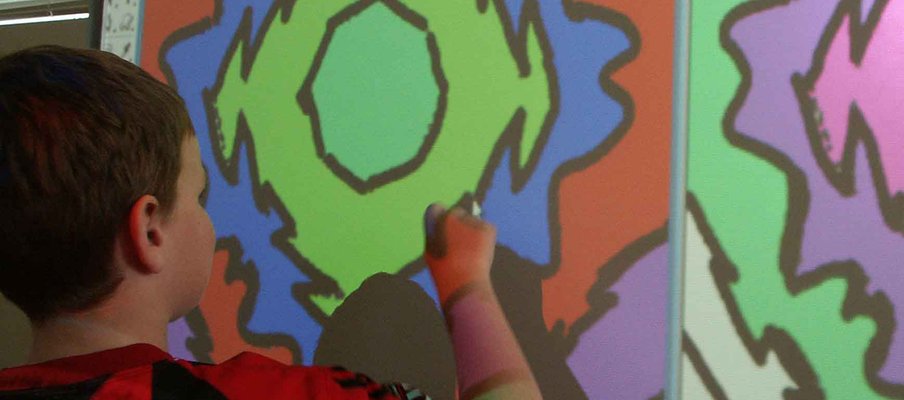Storytelling through digital animation

For many organizations, keeping up with technology can be a daunting task, such as using new tools in the workplace, incorporating new skills into daily life, or keeping up with social media trends. For the Allen Sapp Gallery, technology is about embracing the future and welcoming the next generation into an evolving world of art and culture.
“We spent two days at a workshop lead by two Pixar studio animators at the University of Saskatchewan College of Arts and Science, and it was amazing,” said Robin Dyck, acting administrator of the Allen Sapp Gallery, who has been busy creating several animation programs and workshops. “We brought back a lot of good ideas with us and we’re ready to try them out,” she continued. “Our staff has also been trained and oriented in story development, story boarding, animation software, SMART technology, and the use of digital cameras. Our educational programmers have also attended digital photograph workshops, basic animation workshops, and had hands on instruction with the Frames 4 software and use of iMac computers.”
The programs that are to be piloted this year will help provide access points to the art of Allen Sapp and build on SMART board technology, an interactive whiteboard to improve learning outcomes and assist in teaching advanced art concepts. SMART boards combine the simplicity of a whiteboard with the power of a computer to produce an interactive whiteboard that delivers dynamic lessons. Some of the programs offered will include: “Introduction to Animation”, “Story Development and Story Boarding”, Capturing Your Animation”, and “Editing Your Animation”. The gallery is hoping to attract at-risk youth to participate in the programs.
“Students will be offered a unique opportunity with our new programs,” said Dyck, “We’ve taken some of Allen Sapp’s paintings and digitally altered some of the people out so only the backgrounds remain. We did this with the intention that students will be able to take the pictures and animate his paintings with their own interpretations and artistic perspectives.”
Several pilot sessions are to begin mid- 2012, with hopes to officially launch the sessions shortly after. Currently, the gallery continues to offer unique educational programming, as well as tours of exhibitions. The gallery currently uses SMART technology, traditional art mediums, games, as well as elder teachings as a regular part of the program plans. It started developing stop-motion animations three years ago, as a means for students to develop skills in a new media of art and storytelling. The current offerings use artifacts and historical information to connect the current exhibitions to First Nations traditions, culture, and practices.
The Allen Sapp Gallery opened in 1989 and is the only “public” gallery in honour of a living artist. The Gallery received funding support from SaskCulture through the Capacity Building Grant to assist with development of these new programs. With the grant, the Gallery hopes to provide new access points to the art of Allen Sapp and build capacity in art instruction by creating new educational programs.

